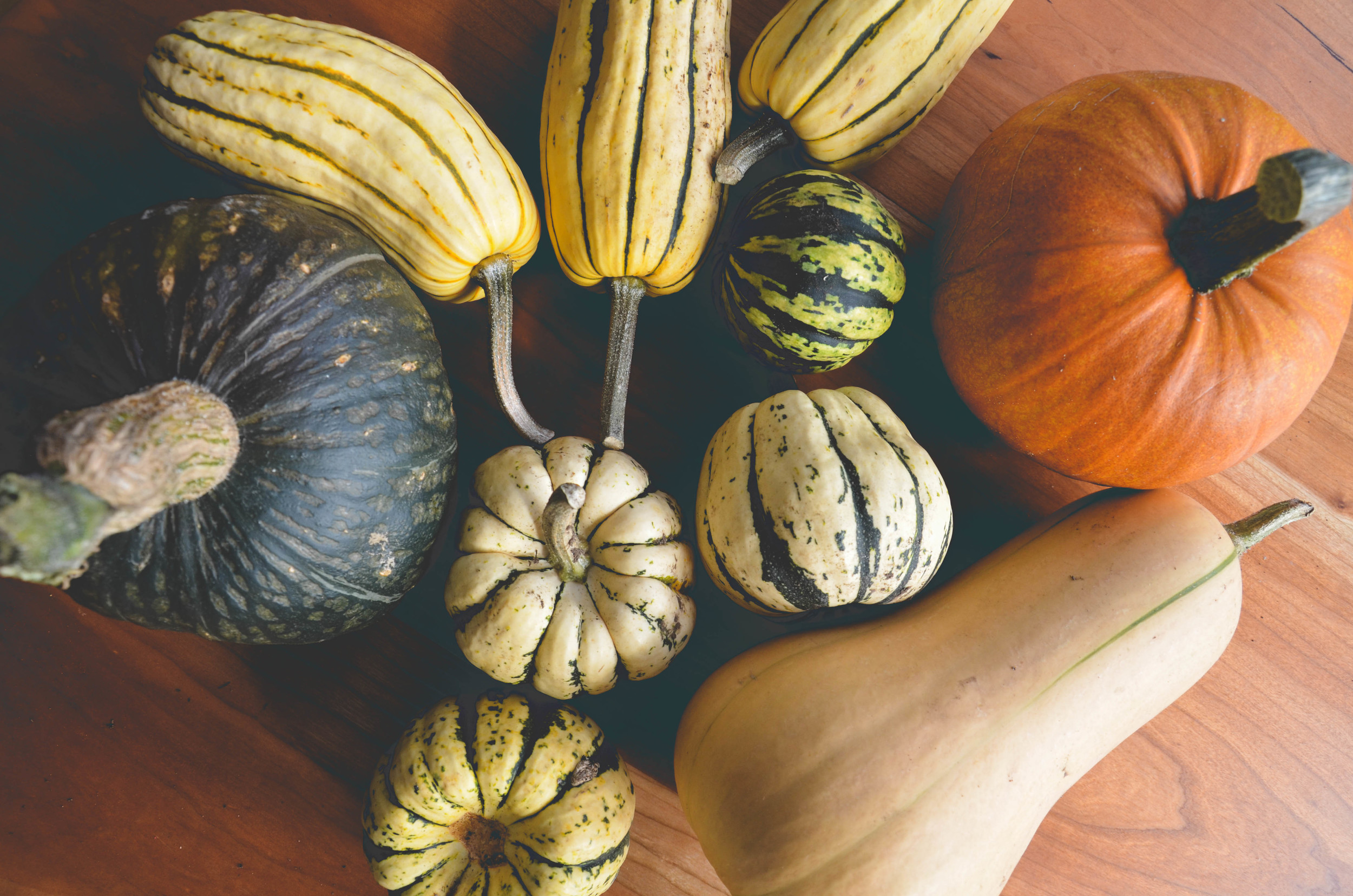We often refer to Winter squash as “long-season crops”. Long-season crops typically grow slowly and remain in the garden for the majority of the growing season, planted in the spring and harvested in the fall. While summer squash (the soft skinned counterparts of winter squash) grow relatively quickly and have a very short storage life; when properly cured, the tough skinned winter squash can store up to 6 months in a cool, dry location. The key to growing perfect butternut and acorn squash (not to mention pumpkins and kabocha) is simply knowing the lifecycle of the plant, when to harvest, and how the fruits should be cured.
Winter squash fruit is mature when it is full sized, properly colored and has a tough skin. Sizes and color will vary between varieties. Even if your squash already appears mature and takes on the color and size you expect, we highly recommend leaving the fruit on the vine while the plant dies back. The warm temperatures of late summer and early autumn will help cure the fruit and increase the storage life.
Once the plant has died back, use sharp pruners or a knife to cut the stem from the vine. Make sure to leave 5-6 inches of stem on the top of the fruit. A broken stem exposes the fruit to rot, so be careful when harvesting and transporting fruit. If one of your stems does break off, be sure to use that fruit within a few weeks of harvest.
Fruit that is exposed to freezing temperatures will not store long, so make sure to harvest winter squash before the first frost in the fall. In general, temperature extremes reduce storage life, so aim to keep your winter squash in a dry location that stays between 50 and 55°F. Check up on your stores every few days throughout the fall and winter, turning fruits to look for bruising or wounds that can lead to rot. Use the ugliest and most damaged fruits first and enjoy your harvest as long as possible through the off-season!



